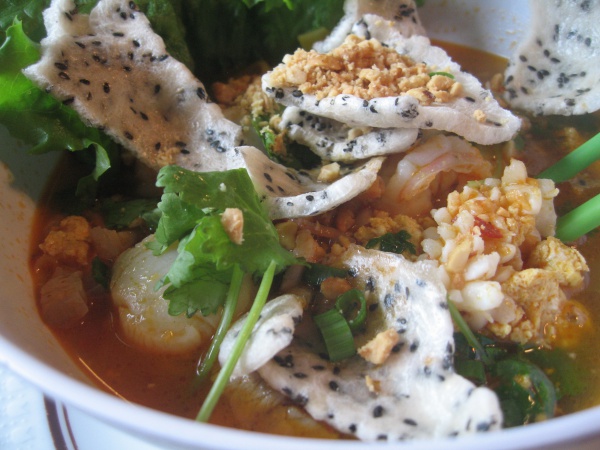Facts About Mì Quảng
Mì Quảng is a cherished and traditional Vietnamese noodle dish originating from Quảng Nam Province in central Vietnam. Celebrated for its rich flavors and cultural importance, Mì Quảng is a mainstay at family gatherings, death anniversaries, and Tết (Vietnamese New Year) celebrations. This popular dish is widely available in restaurants throughout Vietnam and is a common choice for lunch.
The primary ingredients of Mì Quảng include rice noodles, meat, and an assortment of fresh herbs. What distinguishes this dish is its distinctive serving style: a modest amount of broth, often infused with turmeric, is added to the bowl. Wide rice noodles are arranged atop a bed of fresh herbs, followed by the addition of warm or lukewarm broth and meat. The types of meat used can vary, including shrimp, pork, chicken, fish, or beef. The broth itself is a flavorful concoction made by simmering the meat in water or bone broth, seasoned with fish sauce, black pepper, shallot, garlic, and turmeric.
A variety of fresh herbs enhance the dish, such as basil, cilantro, scallions, Vietnamese coriander, banana flower, and lettuce. To add a delightful crunch and extra flavor, the dish is garnished with peanuts and toasted sesame rice crackers. Some versions also include quail eggs, pork sausage, or shredded pork rinds. For those who prefer a bit of zest, lime juice, fresh chili peppers, soy sauce, or chili sauce can be added as additional seasonings. Additionally, Mì Quảng can also be enjoyed without broth, served as a refreshing salad.
A charming Vietnamese saying highlights the dish's cultural significance: a girl from Quảng Nam inviting her lover to share a cup of tea and a bowl of Mì Quảng to express her affection. This saying underscores the importance of Mì Quảng, making it not just a meal, but a beloved part of Vietnamese heritage.

 China
China